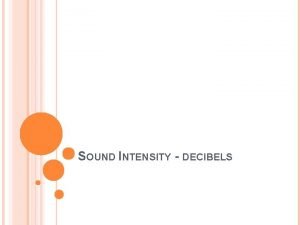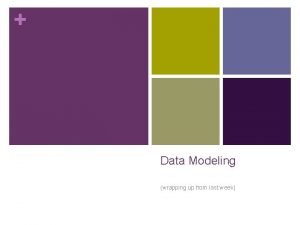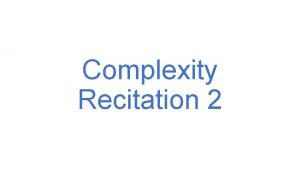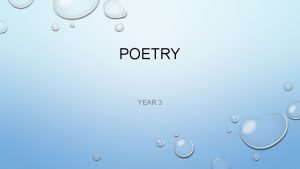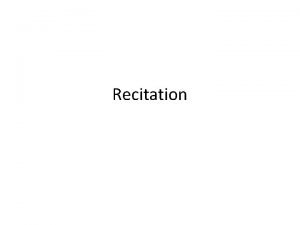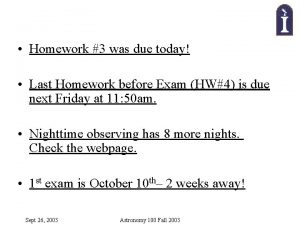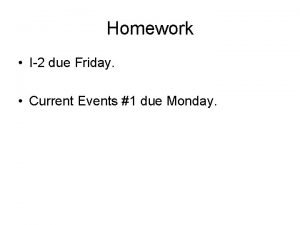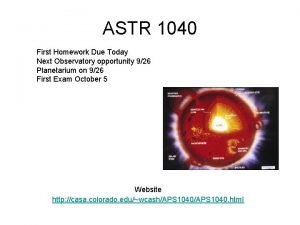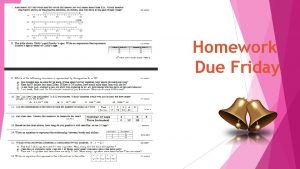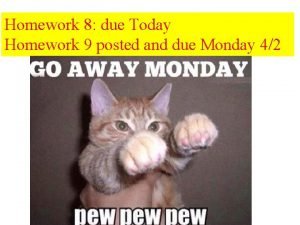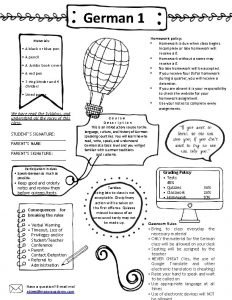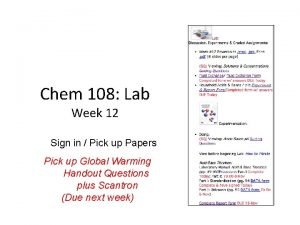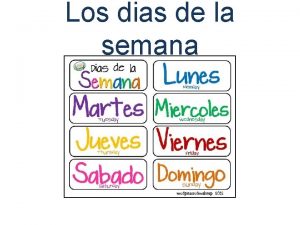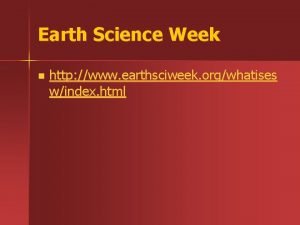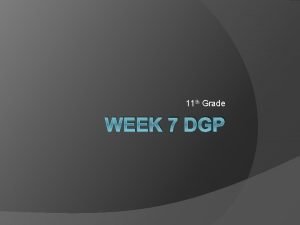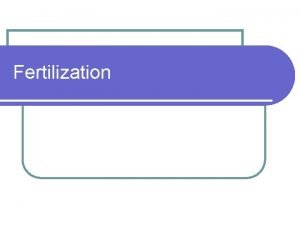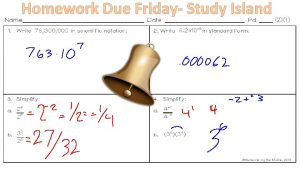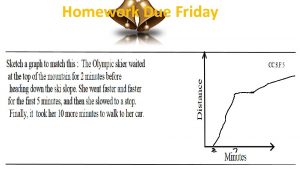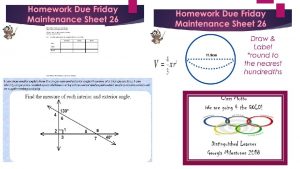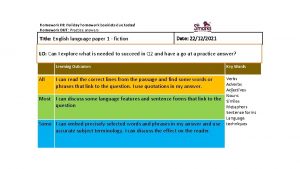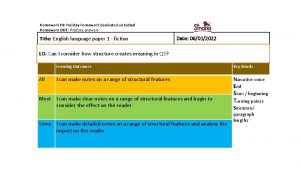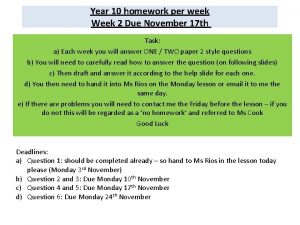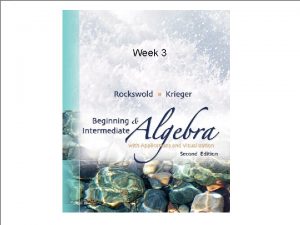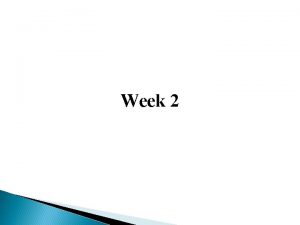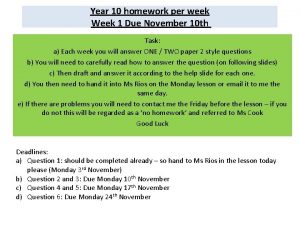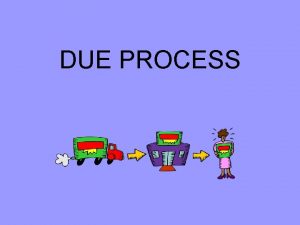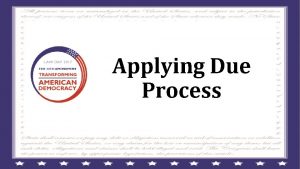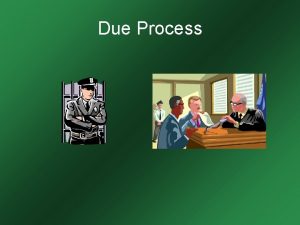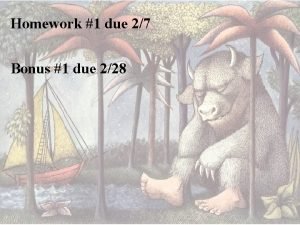Homework due in recitation this week Recitation Homework












































- Slides: 44

Homework due in recitation this week Recitation Homework on water issues in the Republican River Basin (10 points) Due in recitation class during week 3 Turn in at the beginning of class for full credit. Posted on Blackboard under “Assignments> Recitation HW” 1

Unit Assessment Due this Friday • Water Unit Assessment Part I – claims and evidence in popular media articles and scientific journal articles • Posted on Blackboard under “Assignments> Unit Assessments” 2

Learning Objectives 1. Explain competing sources of water usage for Nebraska: • Drinking water • Agriculture • Wildlife • Industry and energy production 2. Trace groundwater used in irrigation back to it’s origins. 3. Trace groundwater used in irrigation to it’s ultimate location. In-Class Participation Points: Clickers 3

Water Resources in Nebraska One example that lets us apply the ideas we talked about last week. • Finding and evaluating information • Making good decisions based on well-reasoned values and good information 4

How do we use water in the state of Nebraska? 5

Competing usage of water in Nebraska Where does our water come from? How is water used? 1. Lincoln drinking water 2. Water for agricultural irrigation 3. Water for wildlife 4. Water for energy and industry 6

1. Where does Lincoln’s drinking water come from? A) The Platte River B) Groundwater under Lincoln C) Groundwater from outside of Lincoln D) Branched Oak reservoir E) Other 7

Lincoln’s water wells • Lincoln’s drinking water comes from groundwater wells near Ashland, NE • The shallow aquifer is recharged by the Platte River 8

Where does drinking water come from in the rest of the state? • Most drinking water is groundwater http: //dhhs. ne. gov GWUDI= Ground Water Under the Direct Influence of Surface Water 9

2. Where does most of the water for irrigation in Nebraska come from? A) Surface water (like the Platte River) B) Groundwater C) Rainwater holding tanks D) Other 10

Nebraska relies primarily on groundwater to supply irrigation 11

US Bureau of Reclamation Surface Water Irrigation districts Areas irrigated with surface water Regional and area boundaries 565, 000 acres irrigated with surface water 12

Which state in the U. S irrigates the most area of land? 13

Ogallala Aquifer • Yields ~30% of the ground water used for irrigation in the U. S. • Since 1950, agricultural irrigation has reduced the saturated volume of the aquifer by an estimated 9%, and in some states up to 40% 14

Ogallala Aquifer • The aquifer is the deepest in Nebraska • Since 1970 in Nebraska the aquifer has not experienced significant depletion 15

3. Where does water for wildlife come from? Let’s take one example: The Rainwater Basin 16

Rainwater Basin 17

Where does water for the Rainwater Basin come from? A) B) C) D) Platte River Groundwater Rainwater Other 18

4. Where does water for industry and power generation come from? • It depends… mostly surface water, some groundwater 19

Thermoelectric use • Surface water is used to cool power-producing equipment • Power plants boil water to create steam which turns turbines to generate electricity • Necessary in coal, nuclear, natural gas and oil power plants • Water that is not evaporated is returned to the river 20

Industry and Mining 21

Competing uses of water in Nebraska Which area uses the MOST water: A. Drinking water B. Agriculture C. Wildlife D. Industry and energy production 22

How much water used in Nebraska? 23

How much water used in Nebraska? 24

Ogallala Aquifer CQ: How does water get in to the Ogallala Aquifer? A) Snowmelt from the Rockies that goes underground B) Lakes that got buried hundreds of years ago C) Water deposits from thousands of years ago D) Precipitation above the aquifer 25

Ogallala Aquifer • • • Much of the water originally entered the aquifer during a wetter climate during the last ice age (12, 000 to 110, 000 years ago) Present-day recharge with fresh water is extremely slow Most of the aquifer is considered “Paleowater” or “fossil water” 26

After water is used for irrigation, where does it go? Ultimately the majority of irrigation water is transpired by plants, and ends up in the air as water vapor. 27

Factors affecting where irrigation water goes • • • Temperature Humidity Soil characteristics Local hydrology Plant growth Type of application (drip irrigation vs center pivot sprinkler irrigation) 28

Can irrigation water return to the aquifer? To do so, it would need to infiltrate the soil, then percolate all the way down to the aquifer (almost 400 feet below the surface in areas of Nebraska) 29

Factors affecting infiltration • • • Precipitation Soil characteristics Soil saturation Land cover Slope of the land Evapotranspiration 30

1) Where has the aquifer increased? How do you think this happened? 2) Where has the aquifer decreased? How do you think this happened? 31

32

How much water does a crop need? • • Alfalfa = 22 – 24 inches Corn = 19 – 20 inches Soybean = 16 -17 inches Spring wheat = 12 - 16 inches NDSU Extension Service 33

Where can we consistently grow corn and soybeans in the state without irrigation? How much water does a crop need? • Alfalfa = 22 – 24 inches • Corn = 19 – 20 inches • Soybean = 16 -17 inches • Spring wheat = 12 - 16 inches 34

USDA ave corn prices 2014 -2015: $3. 50 per bushel 35

How much does irrigation contribute to our state’s economy? • In 2007, in the United States, irrigated agriculture had a $4. 7 billion economic value • In the High Plains, the total economic impact of converting all irrigated acres to nonirrigated dryland farming would be an annual net loss of more than $1. 6 billion to our economy (nearly 7, 300 jobs) Texas Water Resources Institute, 2012 36

Given these competing water needs… … how do we best decide how water should be used? … who gets to decide? … how should those decisions change if/when water becomes more scarce? 37

The controversy: Should we (further) restrict the amount of water used for agricultural irrigation in Nebraska? 38

The Controversy vs The Problem • Controversy: What people argue about • The Problem: The broader, deeper issue that results in the controversy 39

What is the problem about? 1) With your group, make a list of the elements of the argument in terms of: • Ethical/moral • Economic • Political or Social • Environmental 2) What are the view points of those on different sides of the argument? Example for “Political” 1) One element is that rivers cross state boundaries 2) Some feel that we should “share” more equitably with other states that are downstream. Others feel that the resources in Nebraska belong to 40 Nebraska.

Ethical/moral Student responses: 41

Economic Student responses: 42

Political or Social Student responses: 43

Environmental Student responses: 44
 Week by week plans for documenting children's development
Week by week plans for documenting children's development Due piccole sfere identiche sono sospese a due punti p e o
Due piccole sfere identiche sono sospese a due punti p e o Ha i lati e gli angoli tutti uguali
Ha i lati e gli angoli tutti uguali Substantive vs procedural due process
Substantive vs procedural due process Slidetodoc. com
Slidetodoc. com Last week's homework
Last week's homework Last week's homework
Last week's homework Week 16 homework: penetration testing 1
Week 16 homework: penetration testing 1 Did you finish your work
Did you finish your work Xvvvxv
Xvvvxv What is meant by etiquette of recitation of the holy quran
What is meant by etiquette of recitation of the holy quran Is the rote recitation of a memorized written message
Is the rote recitation of a memorized written message Design a museum exhibit holistic rubric
Design a museum exhibit holistic rubric Learning objectives of poem recitation
Learning objectives of poem recitation Récitation les hiboux
Récitation les hiboux Active recitation
Active recitation Tips for reciting poetry
Tips for reciting poetry Namaz posture 1
Namaz posture 1 3 weeks from today
3 weeks from today Homework is due on friday
Homework is due on friday Homework due tomorrow
Homework due tomorrow Homework due today
Homework due today Homework is due on friday
Homework is due on friday Homework due today
Homework due today Homework due today
Homework due today Homework due today
Homework due today Homework is due
Homework is due Folk culture and popular culture venn diagram
Folk culture and popular culture venn diagram Homework due today
Homework due today Alitteration definition
Alitteration definition Homework oh homework i hate you you stink
Homework oh homework i hate you you stink Consonance
Consonance Jack prelutsky homework oh homework
Jack prelutsky homework oh homework Homework i love you poem
Homework i love you poem Homework oh homework
Homework oh homework Fnf quiz
Fnf quiz Happy lab week banner
Happy lab week banner Inductive vs deductive learning
Inductive vs deductive learning The doctor gave me a for some medicine last week
The doctor gave me a for some medicine last week Language that looks like english
Language that looks like english Semana
Semana Earth science week
Earth science week Dgp week 11 answers
Dgp week 11 answers Blessings for the week
Blessings for the week Blastocele
Blastocele





